c^18/c^6
c^12
?
This is what the "a" and "b" values are in
a(b)^x
What is the y-intercept (starting value) and constant multiplier (pattern)?
Sketch a graph of exponential growth. What is special about the multiplier when it’s growth?
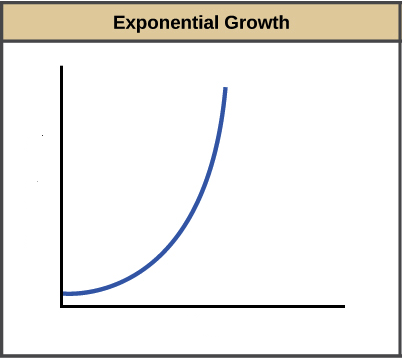
Simplify: 6tv^0
6t
Use y = 250(1.2)^t What is the initial?
What is 250?
(28n^9)^0
1
?
This is the formula for exponential functions.
What is
a(b)^x
?
The graph of an exponential function will always cross the x - axis. True or false, explain your answer.
What is false.
Simplify: (4^2)(x^(-2))
8 / x^2
Use y = 250(1.2)^t What is the growth factor?
What is 1.2?
-5x^-3
-5/x^3
These ordered pairs represent an exponential function; (-1, .5),(0,3),(1,18),(2,108). True or false, explain your answer.
What is true there is a constant multiplier (6).
y = 2^x
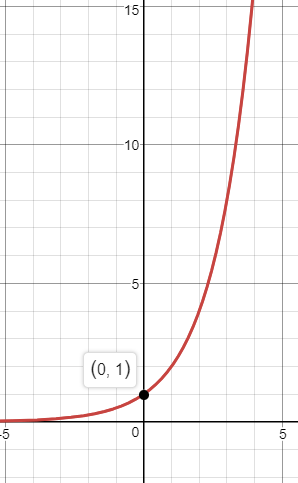
Simplify: 4(x^-2)(g^3)
4g^3 / x^2
Use y = 25(0.4)^t What is the growth factor?
What is 0.4?
(-3us^8d^2)^4
81u^4s^32d^8
This is the answer when f(x) = 10(5)^x is evaluated for f(3).
What is 1250?
Graph
y = 4(1/2)^x
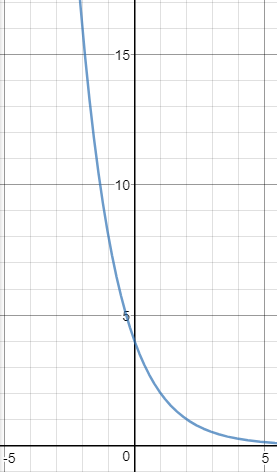
Simplify: ( (4^-2)(x^-5)(y^-9)(z^-3) )^0
1
y = 9.8(1.35)^t What is the growth factor?
What is 1.35?
(20q^5p^-1)/(5q^3p^8)
(4q^2)/p^9
The graph of an exponential function, V, passes through the points (0, 2) and (3, 128) as shown on the graph below. Write an equation for the function V(x).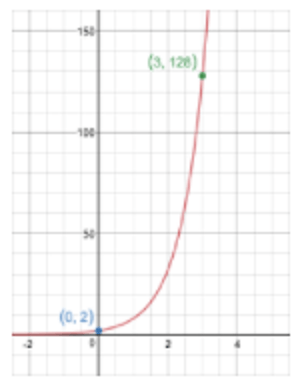
V(x) = 2(4)^x
Find the equation that models the following table.
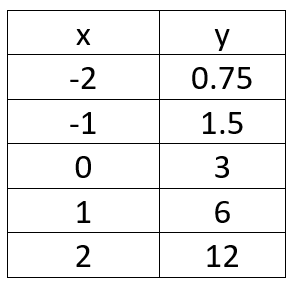
y = 3(2)^x
( (x^-2)(y^2) ) / ( (b^-4)(c^4) )
( (b^4)(y^2) ) / ( (c^4)(x^2) )
y = 9.8(1.35)^t What is the initial rate?
What is 9.8?